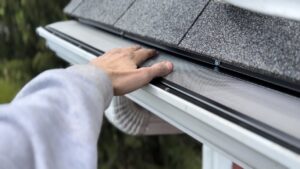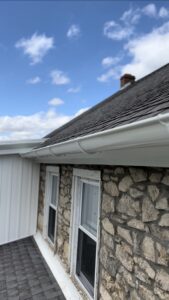Hey there, homeowner! Have you ever stopped to think about the unsung heroes protecting your house from rainwater havoc? Were talking about gutters! These humble yet vital components play a significant role in safeguarding your home’s foundation, walls, and landscaping from potential water damage.
Importance of Gutters
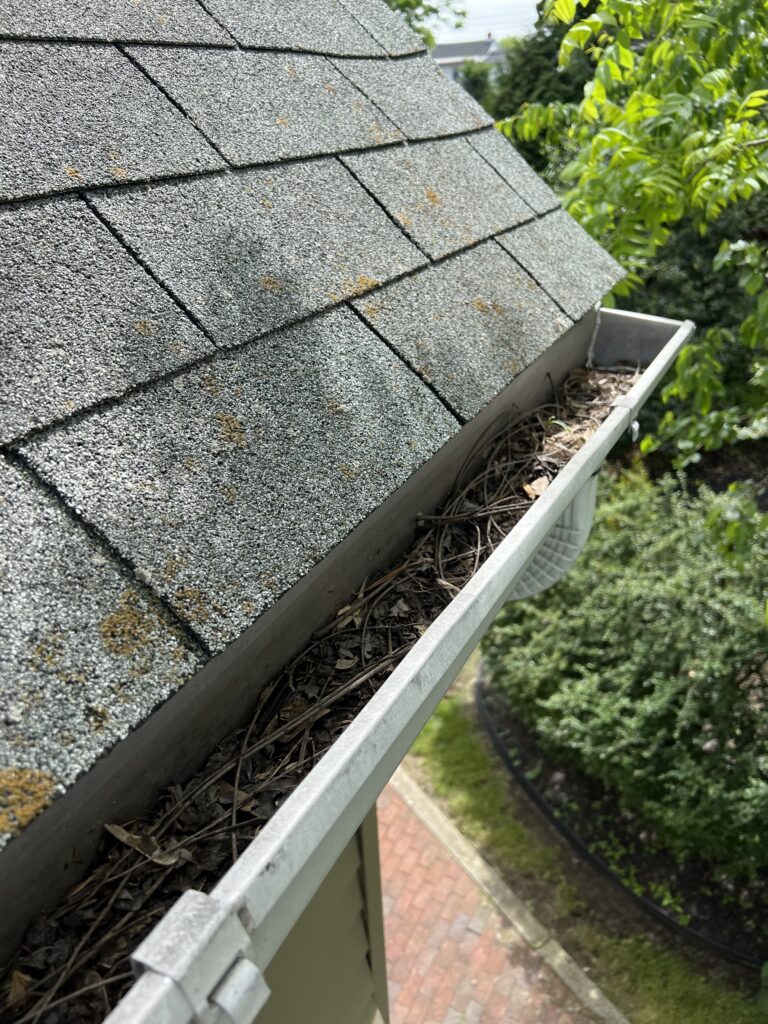
While gutters might not be the most attention-grabbing aspect of your house, their significance cannot be underestimated. They serve a vital purpose in safeguarding your property from a range of potential issues, ensuring that your home maintains its safety and pleasant atmosphere. Delve deeper into the reasons why well-maintained gutters are essential and the potential repercussions of neglecting their upkeep:
- Shielding Your Home’s Foundation – One of the primary functions of gutters is to protect your home’s foundation. By directing rainwater away from the base of your house, gutters prevent soil erosion and eliminate the risk of shifts and cracks in the foundation, which can lead to expensive repairs.
- Keeping Basement Leaks at Bay – Without proper guttering, rainwater can overflow and seep into your basement, causing leaks or flooding. This not only damages your belongings but can create an ideal environment for mold and mildew growth.
- Preserving Your Roof and Siding – Gutters play a vital role in preserving the integrity of your roof and siding. They prevent water from pooling on the roof’s surface, protecting it from leaks and potential water damage. Additionally, gutters ensure rainwater doesn’t splash onto your siding, preventing stains, rot, and other forms of deterioration.
- Preventing Soil Erosion and Landscape Damage – If your home is situated on a slope, rainwater can lead to significant soil erosion, causing ditches and trenches through your yard. Gutters effectively control the flow of water, preventing erosion and preserving your landscape’s appearance.
- Avoiding Standing Water and Ice Dams – Clogged gutters can lead to pools of standing water, inviting pesky insects and contributing to potential water damage. In colder climates, clogged gutters may also lead to ice dams along the edge of the roof, which can damage shingles and gutters themselves.
- Promoting a Healthy Environment – Stagnant water in clogged gutters can create a breeding ground for mosquitoes and other pests, impacting the health and comfort of your family.
- Ensuring Effective Drainage on Clay-Rich Soil – Homes surrounded by clay-rich soil tend to retain water, making gutters even more crucial in redirecting excess water away from the foundation.
Factors to Consider In Choosing The Right Gutter System
- Climate and Weather Conditions: Mother Nature can be quite unpredictable, and your gutter system should be ready to handle whatever she throws at it.If your residence is situated in a region prone to substantial rainfall or frequent storms, you’ll require gutters that can effectively manage significant water flow without experiencing overflow issues. On the other hand, snowy regions may require gutters with adequate pitch and the ability to handle ice buildup.
- Home Architecture and Roof Type: Your home’s unique design and roof type plays a significant role in determining the ideal gutter system. The pitch and slope of your roof, as well as the material it’s made of (such as shingles or metal), will impact how effectively the gutters collect and channel rainwater.
- Local Building Codes and Regulations: While gutters might not be the most thrilling topic, it’s crucial to ensure that your chosen gutter system complies with local building codes and regulations. Avoid any potential headaches by checking with your local authorities or consulting a professional.
- Budget and Cost Considerations: Remember, quality matters when it comes to safeguarding your home. Consider installation costs, maintenance expenses, and the durability of the materials before making a decision.
Types of Gutter Systems
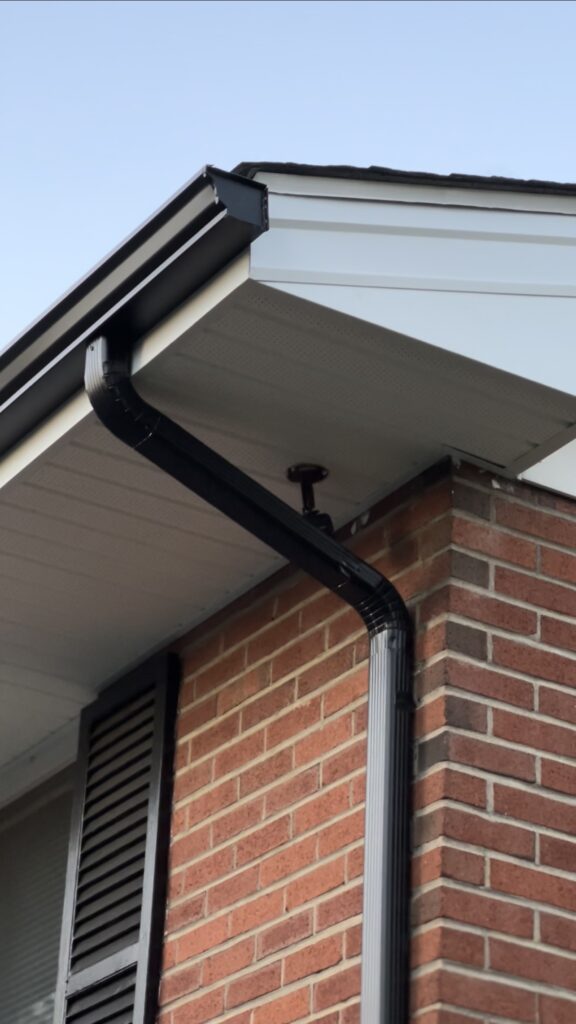
With various styles and materials available, making an informed decision is essential to ensure your gutters effectively protect your home from water damage.
Sectional Gutters
- Materials and Durability: Sectional gutters are typically made from materials such as aluminum, vinyl, or steel. Aluminum gutters are the most popular choice due to their lightweight nature, corrosion resistance, and affordability. Vinyl gutters are budget-friendly but may not withstand extreme weather conditions as well. Steel gutters, on the other hand, offer excellent durability but require regular maintenance to prevent rusting.
- Ease of Installation and Maintenance: Sectional gutters are available in pre-cut sections, making them a suitable option for DIY enthusiasts. They are relatively easy to install, especially for those with basic home improvement skills. Maintenance involves cleaning out debris regularly to prevent clogging and ensure proper water flow.
Seamless Gutters
- Advantages over Sectional Gutters: Seamless gutters are custom-made to fit your home, eliminating the need for seams or joints along the gutter’s length. This seamless design offers significant advantages over sectional gutters, as it reduces the risk of leaks and potential points of failure. With no seams, seamless gutters provide improved aesthetics and a sleek appearance.
- Professional Installation Requirements: Unlike sectional gutters, seamless gutters require professional installation. A specialized machine is used on-site to create custom-fit gutters, ensuring a perfect match to your home’s measurements. Although professional installation may come at a higher initial cost, the long-term benefits of reduced maintenance and increased durability often outweigh the expense.
Rain Chains and Downspouts
- Aesthetic Appeal and Functionality: Rain chains are an attractive alternative to traditional downspouts. They add a touch of elegance and charm to your gutter system, creating a soothing visual and auditory experience as rainwater cascades down the chain. You can find a diverse range of ornamental chains in various designs and materials like copper, brass, or aluminum. This variety enables you to select a style that perfectly complements your home’s aesthetics.
- Compatibility with Different Gutter Systems: Rain chains can be incorporated into both sectional and seamless gutter systems. They are compatible with various downspout styles, allowing you to personalize your gutter system further. Keep in mind that while rain chains are visually appealing, they might not be the best fit for areas with heavy rainfall or significant water runoff.
Gutter Materials
When deciding on the ideal gutter material, it becomes crucial to take into account aspects like longevity, upkeep, and visual attractiveness.
Aluminum Gutters
- Lightweight and Corrosion-Resistant: Resistant to corrosion, aluminum gutters are widely chosen. Aluminum’s non-rusting properties make it an exceptional selection for locations with elevated moisture or seaside settings.
- Cost-Effectiveness and Color Options: Aluminum gutters provide remarkable savings for homeowners. Colors vary, providing an opportunity to find a shade that suits your house’s outside appearance.
Copper Gutters
- Elegant Appearance and Patina Over Time: If you seek a gutter material that exudes elegance and sophistication, copper gutters are the way to go. Initially, they showcase a shiny, eye-catching appearance, but over time, they develop a beautiful patina, giving your home a timeless charm.
- Longevity and Durability: Copper gutters are renowned for their exceptional durability and longevity. Proper upkeep can extend their lifespan considerably, making them a sound long-term investment for your property.
Vinyl Gutters
- Affordability and DIY-Friendly: Vinyl gutters are a budget-friendly option, making them ideal for homeowners looking for a cost-effective solution. Their lightweight and easy-to-cut properties make them DIY-friendly, allowing for straightforward installation for those with basic home improvement skills.
- Limitations in Extreme Weather Conditions: While vinyl gutters excel in mild climates, they may not be as suitable for areas experiencing extreme weather conditions. In severe cold or hot climates, vinyl gutters can become brittle or warp, potentially leading to cracks and leaks.
Steel Gutters
- Strength and Durability: Steel gutters offer superior strength and durability if you prioritize resilience. Harsh weather conditions won’t cause any damage to these items.
- Prone to Rust if Not Properly Maintained: While steel gutters boast durability, they are susceptible to rust if not adequately maintained. Regular inspections and prompt rust treatment will ensure they continue to protect your home effectively.
Gutter Guards and Leaf Protection
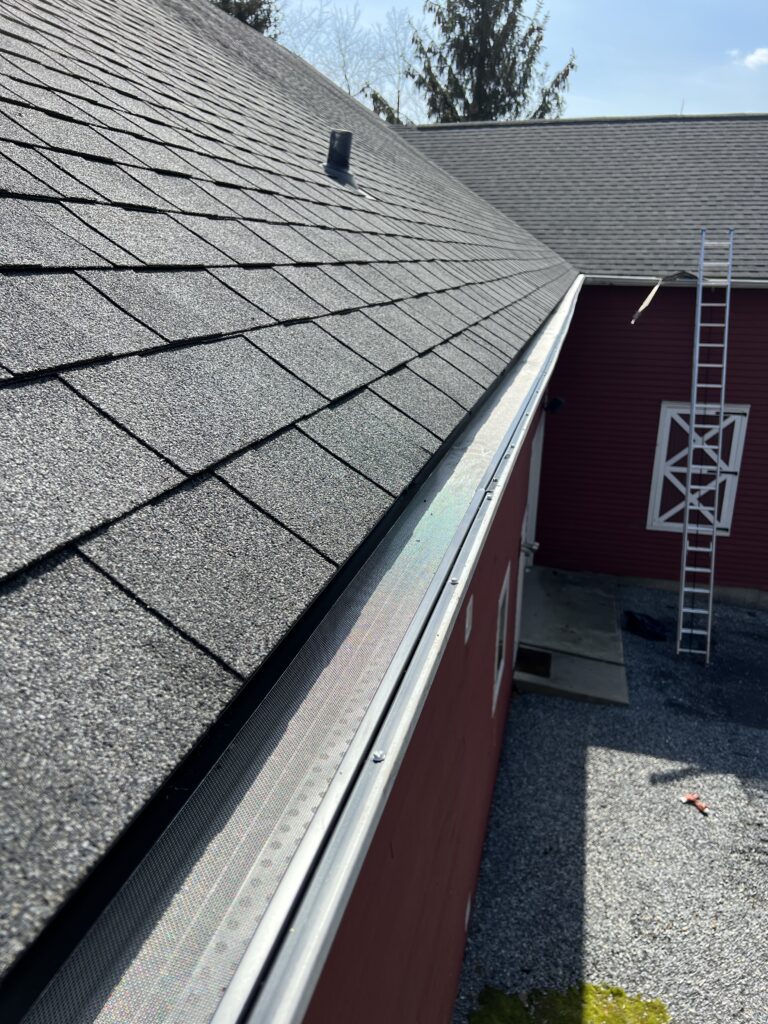
Gutter guards are effective add-ons designed to keep leaves, twigs, and other debris from clogging your gutters, ensuring smooth water flow and preventing potential water damage.
The benefits of installing gutter guards are manifold:
- Reduced Maintenance: Gutter guards drastically reduce the amount of debris that enters your gutters, meaning less frequent cleaning is required. No more climbing ladders to clear out clogs – that’s a win for safety and convenience!
- Improved Water Flow: With gutter guards in place, rainwater can flow freely through the gutters and downspouts without any obstructions, preventing water pooling and potential damage.
- Pest Prevention: Clogged gutters can create a cozy home for insects, birds, and even rodents. Gutter guards act as a barrier, deterring unwanted critters from nesting in your gutters.
- Extended Gutter Life: By keeping debris out, gutter guards help prolong the life of your gutters, reducing the risk of rusting and other damage caused by trapped moisture.
Types of Gutter Guards
- Screen Mesh: Screen mesh gutter guards are thin, mesh-like covers that sit on top of the gutters, effectively blocking debris from entering. They allow rainwater to flow through while keeping leaves and larger debris out. Screen mesh guards are affordable and relatively easy to install, making them a popular choice for many homeowners.
- Gutter Covers: Gutter covers, also known as surface tension or reverse curve gutter guards, feature a curved design that allows rainwater to cling to the cover while debris falls off the edge. These guards are more effective at keeping smaller debris out of the gutters. However, they may require professional installation and come at a higher cost.
- Reverse Curve Systems: Reverse curve systems utilize the principle of surface tension to direct rainwater into the gutter while pushing debris away. These guards are low-profile and blend seamlessly with the roofline, providing a neat and discreet appearance.
Considerations When Choosing Gutter Protection
Before investing in gutter guards, consider the following factors to ensure you choose the right protection for your gutters:
- Gutter Guard Material Selection: Choose guards that match the composition of your gutters for proper installation.
- Roof Slope and Pitch: Different types of gutter guards perform better on certain roof slopes and pitches. Consider your roof’s design to find guards that suit your specific needs.
- Maintenance and Cleaning: While gutter guards reduce the frequency of cleaning, some types may still require occasional maintenance. Consider the ease of cleaning and maintenance when making your choice.
- Weather Conditions: Take into account the weather conditions in your area, including heavy rainfall or snowfall, to select gutter guards that can handle the challenges of your climate.
Maintenance and Upkeep
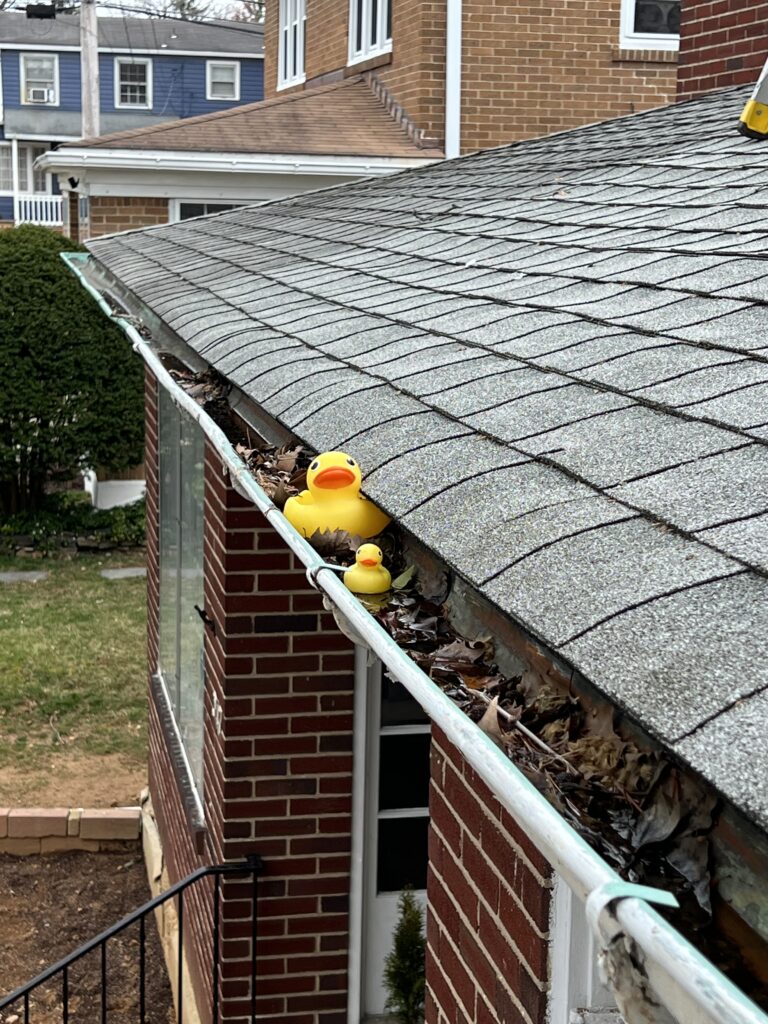
Regular care ensures that your gutters can effectively channel rainwater away from your home, protecting its foundation, roof, and exterior from potential damage.
Regular Gutter Cleaning
Water might overflow from the gutters, leading to potential damage to your roof, walls, and landscaping.
To avoid such issues, aim to clean your gutters at least twice a year, preferably in the spring and fall. If your home is situated near trees, you might need to clean them more frequently. When cleaning your gutters:
- Safety First: Use a stable ladder and wear gloves to protect your hands. Consider using a gutter scoop or a small trowel to remove debris efficiently.
- Flushing the Gutters: After removing larger debris, use a garden hose to flush out any remaining dirt and ensure the downspouts are clear.
- Check for Leaks and Damage: While cleaning, inspect the gutters for any leaks, rust spots, or signs of damage. Address these issues promptly to prevent further deterioration.
Inspecting and Repairing Gutter Systems
Regular inspections are crucial in maintaining the health of your gutter system. By identifying potential problems early on, you can take corrective measures to prevent more extensive and costly repairs later. Here’s what to look for during inspections:
- Sagging Gutters: Check for any sections of the gutter that sag or pull away from the house. This might indicate that the gutters are not adequately secured or that the fascia board needs attention.
- Loose or Missing Fasteners: Ensure all gutter hangers, brackets, and fasteners are secure and in place. Replace any missing or damaged components promptly.
- Rust and Corrosion: Inspect metal gutters for signs of rust or corrosion. Remove rust and apply a sealant or paint to protect the gutters from further deterioration.
- Seam and Joint Integrity: If you have sectional gutters, inspect the seams and joints for leaks or separation. Seal any leaks or consider upgrading to seamless gutters for enhanced durability.
Importance of Proper Drainage
Proper drainage is the backbone of a functional gutter system. Downspouts play a critical role in guiding rainwater away from your home’s foundation, preventing water from pooling and causing structural damage. Here are some considerations for ensuring proper drainage:
- Downspout Placement: Position downspouts away from the foundation, directing water at least three to five feet from the house to prevent soil erosion and foundation damage.
- Gutter Slope: Ensure your gutters have a slight downward slope towards the downspouts to facilitate efficient water flow.
- Downspout Extensions: Consider installing downspout extensions or splash blocks to direct water even farther away from your home, ensuring it doesn’t pool near the foundation.
Professional Installation vs. DIY
When it comes to installing gutters, homeowners often face the decision between hiring professionals or taking the DIY route. A detailed assessment of your gutter project’s requirements is crucial before selecting either option.
Pros of Hiring Professionals
- Expertise and Experience: Professional gutter installers bring specialized expertise and years of experience to the table. Their combined expertise and adaptability ensure a seamless installation experience.
- Time and Efficiency: Professionals are well-equipped to complete the gutter installation swiftly and efficiently. Unskilled individuals may spend an extended period completing tasks that trained professionals can perform swiftly.
- Quality Workmanship: Hiring professionals usually ensures higher-quality work. The efficient gutter installation relies on selecting the appropriate resources and techniques.
- Warranty and Guarantees: Reputable gutter installation companies often provide warranties and guarantees for their work, giving you peace of mind and protection in case of any issues.
DIY-Friendly Gutter Types
- Vinyl Gutters: Vinyl gutters are lightweight, easy to cut, and typically come with pre-cut sections, making them DIY-friendly for those with basic home improvement skills.
- Sectional Gutters: Traditional sectional gutters are designed for easy installation, and homeowners can purchase them in manageable pieces for DIY projects.
Challenging Gutter Types
- Seamless Gutters: Seamless gutters require specialized equipment and expertise to create custom-fit gutters on-site. DIY installation of seamless gutters is not recommended, as improper measurements or installation can lead to leaks and other issues.
- Copper or Steel Gutters: These heavier metal gutters may be more challenging for DIY installation due to their weight and the need for precise fastening and alignment.
Safety Considerations for DIY Installation
Safety is paramount during any DIY gutter installation project. Here are some essential safety considerations:
- Ladder Safety: Use a sturdy ladder and have someone assist you when working at heights. Follow proper ladder safety guidelines to avoid accidents.
- Proper Tools and Gear: Wear appropriate safety gear, including gloves and eye protection. Use the right tools for the job to prevent injury.
- Weather Conditions: Avoid working on gutters during inclement weather, as slippery surfaces can increase the risk of falls.
- Electrical Hazards: Be cautious of overhead power lines while working on gutters, especially with metal tools or ladders.
Don’t compromise on the protection of your home!

When it comes to safeguarding your home from water-related headaches, choosing the best gutter system is paramount. As the top choice for gutter installation and maintenance in Pennsylvania, we strive to exceed customer expectations with personalized services.
Our team of skilled professionals ensures seamless installations and meticulous attention to detail, guaranteeing that your gutters will perform flawlessly, rain or shine.
Experience the Gutter Twins‘ difference – excellence in craftsmanship, top-quality materials, and customer satisfaction that sets us apart as the unrivaled choice for your home’s ultimate gutter solution. Let’s safeguard your home together!

